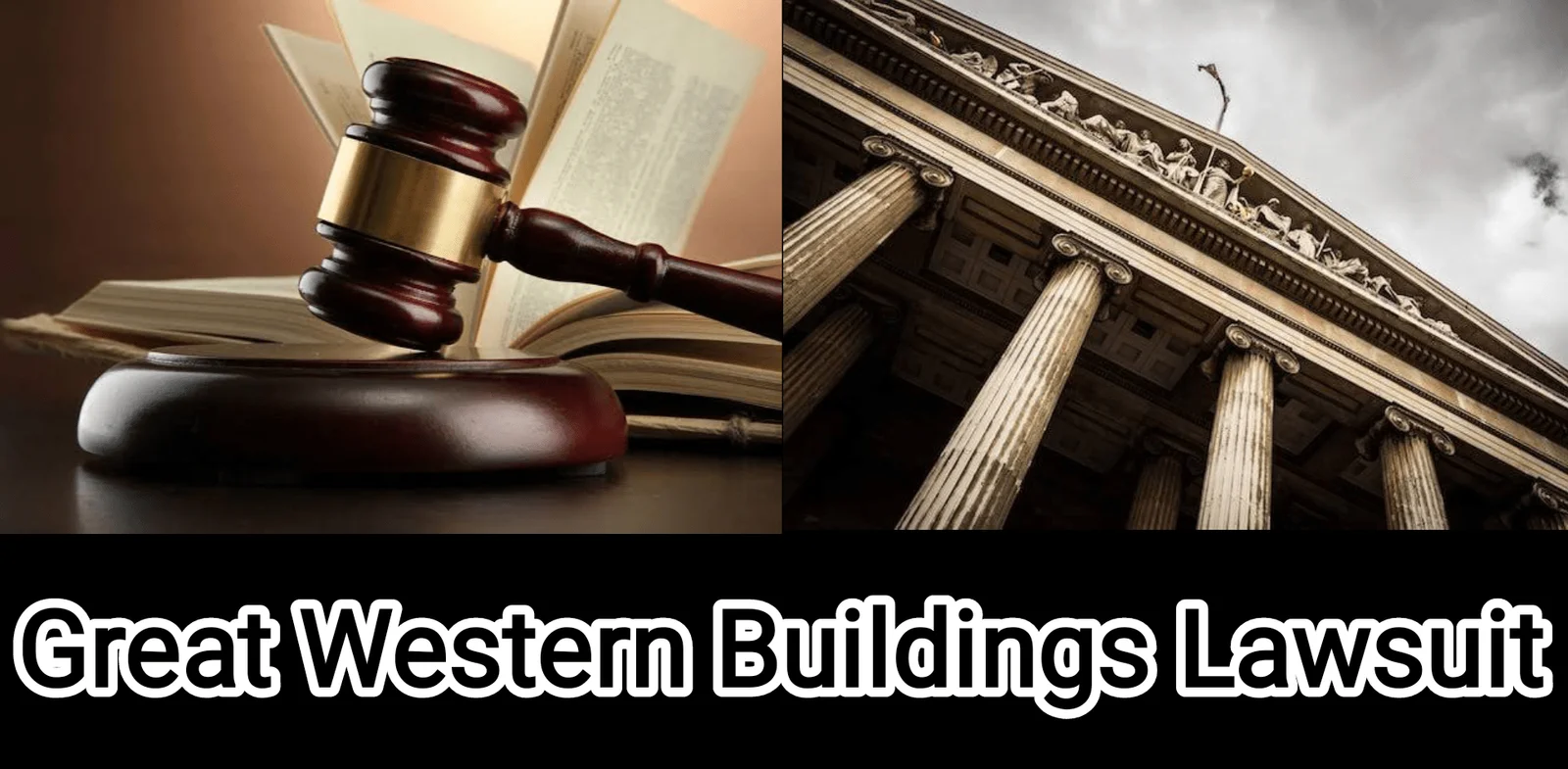Step into the world of iconic Western architecture, where towering structures whisper tales of pioneering spirit and rugged allure. These magnificent buildings stand as testaments to a bygone era, capturing the essence of an untamed landscape and evoking a sense of awe in all who behold them.
However, behind their majestic facades lies a legal battle that threatens to shake the very foundation upon which these architectural marvels rest. Welcome to the Great Western Buildings Lawsuit – an intriguing saga that unveils both controversy and consequences in this captivating blog post! So saddle up, dear readers, as we delve into the heart of this enthralling tale!
A Brief History of Iconic Western Architecture
The history of iconic Western architecture is rich and diverse, reflecting the unique blend of cultures, influences, and landscapes that have shaped the American West. From adobe structures in the desert to grand Victorian mansions in bustling cities, each architectural style tells a story of its time.
One notable period in Western architecture was during the gold rush era. As thousands flocked to California in search of fortune, makeshift mining towns sprang up overnight. The buildings constructed during this time were often simple and utilitarian, made from timber or corrugated iron sheets. These structures served as homes, saloons, and businesses for prospectors seeking their fortunes.
In the late 19th and early 20th centuries, Spanish Colonial Revival architecture became popular across the Southwest. Influenced by Spanish missions and haciendas from earlier times, these buildings featured white stucco walls adorned with decorative tiles and wrought-iron details. They evoked a sense of romance and nostalgia for California’s colonial past.
As urban centers grew along with westward expansion, Art Deco emerged as a prominent architectural style in cities like Los Angeles and San Francisco. Known for its sleek lines and geometric motifs, Art Deco buildings showcased modernity while incorporating elements inspired by Native American artistry.
Post-World War II brought about another wave of architectural innovation with mid-century modern design taking center stage. Characterized by open floor plans, large windows that blurred indoor-outdoor boundaries, and clean lines, Bauhaus-inspired designs promoted functionalism alongside aesthetic appeal.
The Controversy Surrounding the Lawsuit
When it comes to iconic Western architecture, one cannot ignore the controversy surrounding the Great Western Buildings lawsuit. This legal battle has sparked heated debates and divided opinions among experts, historians, and preservationists alike.
At the heart of this controversy lies a clash between those advocating for the preservation of these historic buildings and those who argue for progress and development. On one side, some passionate individuals believe that these structures hold immense cultural value and should be protected at all costs. They argue that demolishing or altering them would not only erase an important piece of history but also rob future generations of their unique heritage.
On the other side, proponents of development point to economic considerations and potential benefits that come with modernizing these locations. They argue that repurposing old buildings can drive tourism, create jobs, and revitalize local economies. Additionally, they claim that making changes to these structures is necessary to meet safety standards or accommodate new uses.
This controversy is further fueled by differing interpretations of architectural significance. Some people assert that preserving original features is essential while others suggest a more flexible approach where adaptations are allowed as long as they respect certain guidelines.
As this legal battle unfolds, key questions emerge: What criteria should be used when determining whether a building deserves protection? How do we balance historical preservation with contemporary needs?
These debates highlight just how complex it can be to navigate issues involving historic architecture in today’s rapidly changing world. While both sides undoubtedly have valid arguments rooted in genuine concerns for our built environment’s past and future, finding common ground may prove challenging.
Key Players in the Legal Battle
The Great Western Buildings Lawsuit has brought together a cast of key players, each with their stakes and perspectives. On one side, we have the plaintiffs – a group of preservation organizations and concerned citizens who believe that the iconic Western buildings should be protected and restored to their former glory. They argue that these structures are not only important for historical reasons but also serve as cultural landmarks within their communities.
Opposing them are the defendants – developers and property owners who see these buildings as valuable real estate opportunities. They argue that restoration efforts would be costly and impractical, and instead propose demolishing or repurposing the structures for more modern use.
In between these two factions stand the legal teams representing both sides. These lawyers will play a crucial role in presenting arguments, examining evidence, and ultimately fighting for their clients’ interests in court.
Impact on Preservation and Restoration Efforts
Preservation and restoration efforts play a crucial role in maintaining the integrity of iconic Western architecture. However, the Great Western Buildings Lawsuit has had a significant impact on these endeavors. With legal battles raging on, it has become increasingly challenging for preservation organizations to carry out their work effectively.
One major consequence of this lawsuit is the delay in restoration projects. As legal proceedings drag on, precious time is lost, hindering progress in preserving historic buildings. This not only affects the physical state of these structures but also delays the opportunity for people to experience and appreciate them.
Another repercussion is the uncertainty surrounding funding. Many preservation initiatives rely heavily on grants and donations, but potential donors may be hesitant to contribute when there is ongoing litigation involved. Without adequate financial support, it becomes difficult to allocate resources towards restoring and maintaining these architectural gems.
Additionally, community involvement can suffer due to legal disputes. Residents who are passionate about preserving their heritage may grow frustrated or disheartened by prolonged court battles that seem never-ending. This lack of engagement can diminish public support for preservation efforts.
Furthermore, with attention focused primarily on legal matters rather than conservation strategies, valuable expertise within preservation organizations may be redirected toward legal consultations instead of actual restoration work. This diversion of resources could result in a loss of specialized knowledge needed to properly preserve historical structures.
Potential Outcomes and Future Implications
As the legal battle surrounding the Great Western Buildings Lawsuit continues to unfold, several potential outcomes could have far-reaching implications for both preservation efforts and the broader field of architecture.
One possible outcome is that the lawsuit could set a precedent for future cases involving iconic Western architecture. If the plaintiffs are successful in their claims, it could open the floodgates for similar lawsuits against other historic structures. This would undoubtedly have a chilling effect on restoration and preservation efforts, as property owners may become hesitant to invest in these projects due to fears of potential legal battles.
On the other hand, if the defendants prevail in court, it could send a message that preservation should take precedence over individual rights. This outcome would likely be met with backlash from property owners who argue that they should have more control over what happens to their buildings.
Another potential outcome is that a settlement may be reached between the parties involved. While this would avoid a lengthy court battle, it may leave many questions unanswered and fail to provide clear guidance on how future disputes should be resolved.
Regardless of how this particular case is ultimately resolved, its impact on preservation and restoration efforts cannot be understated. It serves as a reminder of just how complex these issues can be when there are competing interests at play – historical significance versus private property rights.
Looking ahead, it will be crucial for policymakers, architects, historians, and community stakeholders to work together in developing clearer guidelines for balancing preservation with individual property rights. The resolution of this lawsuit has the potential to shape not only future legal battles but also public opinion regarding our responsibility to protect our architectural heritage.
Conclusion: Preserving the Past for the Future
As the legal battle surrounding the Great Western Buildings Lawsuit continues, it is clear that this case holds significant implications for the preservation and restoration of iconic Western architecture. The controversy has shed light on the challenges faced by both property owners and preservation organizations in balancing historical significance with modern development.
While some argue that strict regulations hinder progress and economic growth, others emphasize the importance of preserving our cultural heritage. The outcome of this lawsuit will undoubtedly have a lasting impact on future efforts to protect and restore these architectural treasures.




